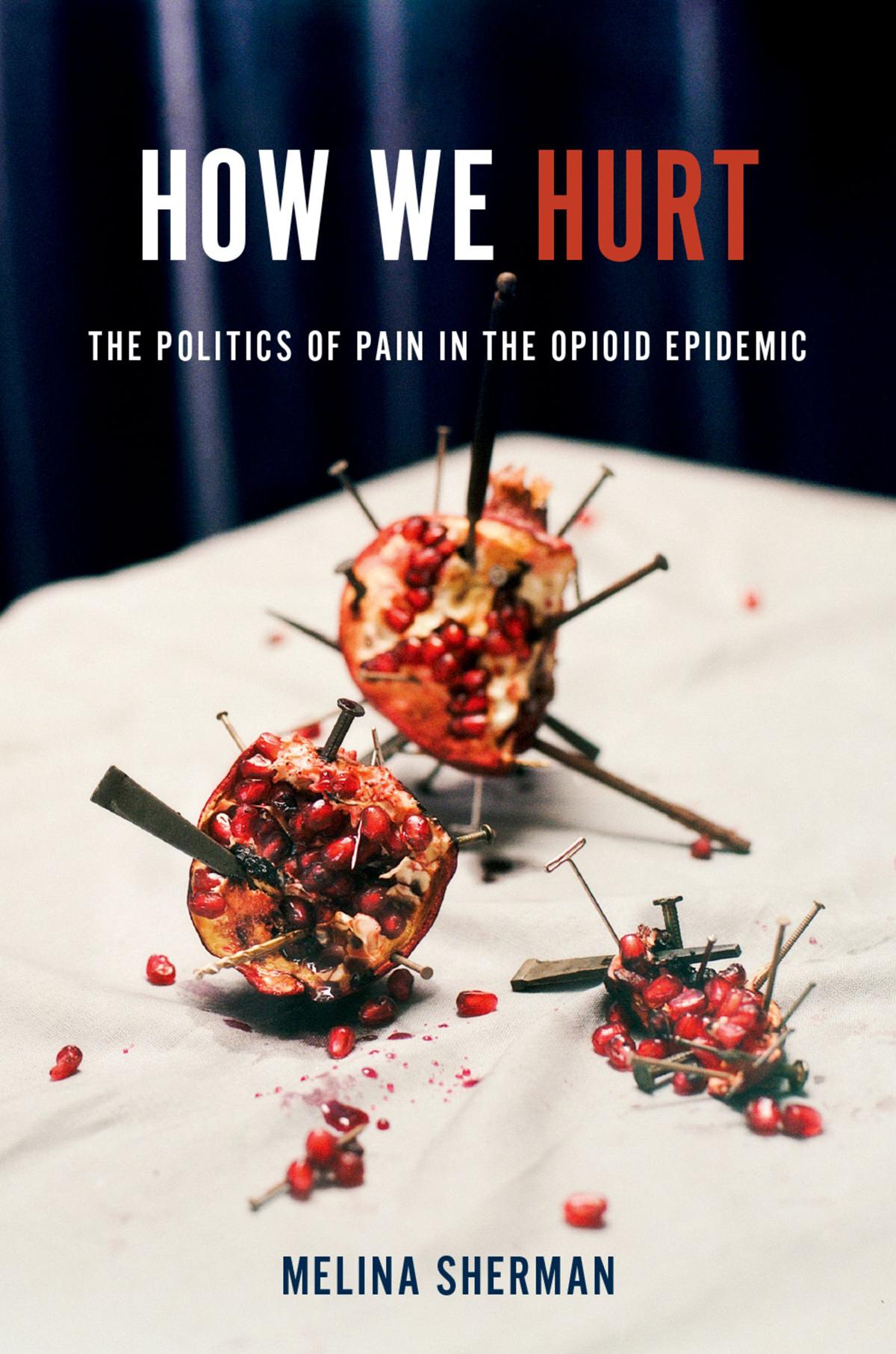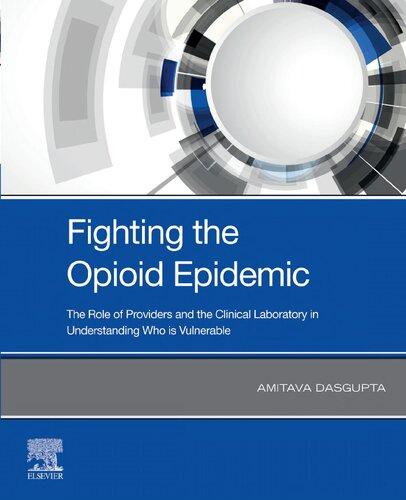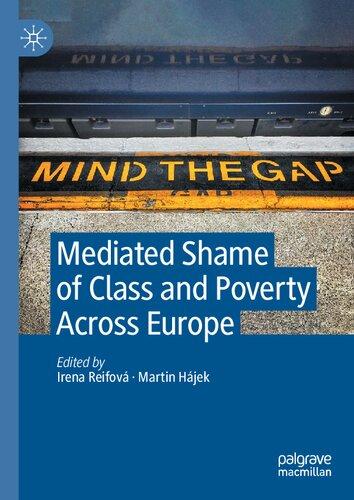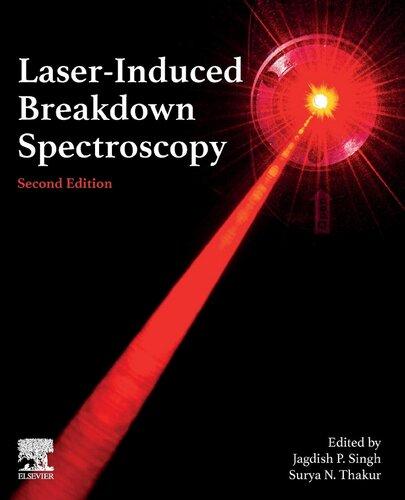https://ebookmass.com/product/pain-induced-

More products digital (pdf, epub, mobi) instant download maybe you interests ...

How We Hurt: The Politics of Pain in the Opioid Epidemic Melina Sherman
https://ebookmass.com/product/how-we-hurt-the-politics-of-painin-the-opioid-epidemic-melina-sherman/

The Right to Pain Relief and Other Deep Roots of the Opioid Epidemic Mark D. Sullivan
https://ebookmass.com/product/the-right-to-pain-relief-and-otherdeep-roots-of-the-opioid-epidemic-mark-d-sullivan/

Fighting the Opioid Epidemic: The Role of Providers and the Clinical Laboratory in Understanding Who is Vulnerable 1st Edition Amitava Dasgupta
https://ebookmass.com/product/fighting-the-opioid-epidemic-therole-of-providers-and-the-clinical-laboratory-in-understandingwho-is-vulnerable-1st-edition-amitava-dasgupta/

Mediated Shame of Class and Poverty Across Europe Irena Reifová
https://ebookmass.com/product/mediated-shame-of-class-andpoverty-across-europe-irena-reifova/

Office-Based Buprenorphine Treatment of Opioid Use Disorder Second Edition
https://ebookmass.com/product/office-based-buprenorphinetreatment-of-opioid-use-disorder-second-edition/

The Rhetorical Power of Popular Culture: Considering Mediated Texts 3rd Edition, (Ebook PDF)
https://ebookmass.com/product/the-rhetorical-power-of-popularculture-considering-mediated-texts-3rd-edition-ebook-pdf/

Laser-Induced Breakdown Spectroscopy 2nd Edition
Jagdish
P. Singh (Editor)
https://ebookmass.com/product/laser-induced-breakdownspectroscopy-2nd-edition-jagdish-p-singh-editor/

Emotional Choices: How the Logic of Affect Shapes
Coercive Diplomacy 1st Edition Robin Markwica
https://ebookmass.com/product/emotional-choices-how-the-logic-ofaffect-shapes-coercive-diplomacy-1st-edition-robin-markwica/

Circuit directionality for motivation: lateral accumbens-pallidum, but not pallidum-accumbens, connections regulate motivational attraction to reward cues Elizabeth B. Smedley & Alyssa Dileo & Kyle S. Smith
https://ebookmass.com/product/circuit-directionality-formotivation-lateral-accumbens-pallidum-but-not-pallidum-accumbensconnections-regulate-motivational-attraction-to-reward-cues-
Pain-InducedNegativeAffectIsMediatedvia RecruitmentofTheNucleusAccumbensKappa
OpioidSystem
GraphicalAbstract

Highlights
d Painrecruitsthedynorphin-kappaopioidreceptorsystemin thenucleusaccumbens
d Inhibitoryinputsontodynorphincellsarereducedduring inflammatorypain
d Increaseindynorphintonemediatesinflammatorypaininducednegativeaffect
Authors
NicolasMassaly,BryanA.Copits, AdrianneR.Wilson-Poe,..., ReamAl-Hasani,MichaelR.Bruchas, JoseA.Moron
Correspondence al-hasanir@wustl.edu(R.A.-H.), mbruchas@uw.edu(M.R.B.), jmoron-concepcion@wustl.edu(J.A.M.)
InBrief
Massalyetal.identifyapain-induced enhancementinthekappaopioidsystem withinnucleusaccumbens,whichdrives pain-associatednegativeemotional states.Theseresultsprovideafunctional substratefortherapiesthatwould circumventpain-inducedaffective disorders.
Massalyetal.,2019,Neuron 102,1–10 May8,2019 ª 2019ElsevierInc. https://doi.org/10.1016/j.neuron.2019.02.029
Pain-InducedNegativeAffectIsMediated viaRecruitmentofTheNucleusAccumbens KappaOpioidSystem
NicolasMassaly,1 BryanA.Copits,1 AdrianneR.Wilson-Poe,1 LuciaHipo ´ lito,2 TamaraMarkovic,1 HyeJeanYoon,1 ShiweiLiu,3 MarieC.Walicki,1,4,5 DionnetL.Bhatti,1 SunilSirohi,6 AmandaKlaas,7 BrendanM.Walker,6 RachaelNeve,8 CatherineM.Cahill,3 KooreshI.Shoghi,7,9 RobertW.GereauIV,1,9 JordanG.McCall,1,4,5 ReamAl-Hasani,1,4,5,* MichaelR.Bruchas,1,9,* andJoseA.Moron1,9,10,*
1DepartmentofAnesthesiology,WashingtonUniversityPainCenter,WashingtonUniversityinSt.Louis,SchoolofMedicine,St.Louis,MO 63110,USA
2DepartmentofPharmacyandPharmaceuticalTechnologyandParasitology,UniversityofValencia,Valencia46100,Spain
3DepartmentofPsychiatryandBiobehavioralSciences,UniversityofCalifornia,LosAngeles,LosAngeles,CA90095,USA 4DepartmentofPharmaceuticalandAdministrativeSciences,St.LouisCollegeofPharmacy,St.Louis,MO63110,USA 5CenterforClinicalPharmacology,St.LouisCollegeofPharmacyandWashingtonUniversityinSt.LouisSchoolofMedicine,St.Louis,MO 63110,USA
6DepartmentofPsychology,WashingtonStateUniversity,Pullman,WA99164-4820,USA 7DepartmentofRadiology,WashingtonUniversityinSt.Louis,SchoolofMedicine,St.Louis,MO63110,USA 8DepartmentofBrainandCognitiveScience,ViralGeneTransferCore,MIT,Cambridge,MA02139-4307,USA 9DepartmentofNeuroscience,WashingtonUniversityinSt.Louis,St.Louis,MO63110,USA 10LeadContact
*Correspondence: al-hasanir@wustl.edu (R.A.-H.), mbruchas@uw.edu (M.R.B.), jmoron-concepcion@wustl.edu (J.A.M.) https://doi.org/10.1016/j.neuron.2019.02.029
SUMMARY
Negativeaffectivestatesaffectqualityoflifefor patientssufferingfrompain.Thesemaladaptive emotionalstatescanleadtoinvoluntaryopioidoverdoseandmanyneuropsychiatriccomorbidities. Uncoveringthemechanismsresponsibleforpaininducednegativeaffectiscriticalinaddressingthese comorbidoutcomes.Thenucleusaccumbens(NAc) shell,whichintegratestheaversiveandrewarding valenceofstimuli,exhibitsplasticadaptationsin thepresenceofpain.Indiscreteregionsofthe NAc,activationofthekappaopioidreceptor(KOR) decreasesthereinforcingpropertiesofrewardsand inducesaversivebehaviors.Usingcomplementary techniques,wereportthat invivo recruitmentof NAcshelldynorphinneurons,actingthroughKOR, isnecessaryandsufficienttodrivepain-induced negativeaffect.Takentogether,ourresultsprovide evidencethatpain-inducedadaptationsinthekappa opioidsystemwithintheNAcshellrepresentafunctionaltargetfortherapeuticinterventionthatcould circumventpain-inducedaffectivedisorders.
INTRODUCTION
Painisamajor,growingepidemicintheU.S.,afflictingmorethan 30%ofthepopulation(Elmanetal.,2013).Inthismaladaptive condition,thepresenceofunder-oruntreatednegativeaffective
stateslargelydrivesanxiety-andstress-induceddisordersand involuntaryopioidoverdoses(ElmanandBorsook,2016;Volkow andMcLellan,2016).Despitethedrivetoimprovepaintreatment andpreventtragicoutcomes,themechanismsunderlyingthese negativeaffectivestatesarenotyetclear.Recenthumanstudies showreducednucleusaccumbens(NAc)activity,alterations inrewardevaluation,decisionmaking,andmotivationinpain patients(Apkarianetal.,2004;Verdejo-Garcıaetal.,2009).In rodentmodels,transientactivationofkappaopioidreceptors (KORs)inadiscretesubregionoftheNAcabatesthereinforcing andmotivationalvaluesofrewardsthroughpresynapticinhibitionofdopamine,glutamate,andserotoninrelease(Crowley andKash,2015;Naritaetal.,2005;Tejedaetal.,2017).This behavioraladaptationisalsoobservedduringinflammatory pain,whichrepresentsacharacteristicfeatureofnegativeaffectivestates(Al-Hasanietal.,2015;CastroandBerridge,2014; Naritaetal.,2005;Shippenbergetal.,1988;Verdejo-Garcı´a etal.,2009).WehypothesizedthatKORsinasubregionofthe NAc(NAcshellcoldspot[NAcShCS]forratsandventromedial NAcshell[vNAcSh]formice)representakeymechanismfor generatingpain-inducednegativeaffectivestates.
RESULTS
KappaOpioidReceptorsAreBothNecessaryand SufficienttoDrivePain-InducedNegativeAffect Recentevidencefrompainanddepressionstudiesreportthat decreasedmotivationingoal-directedbehaviorrepresentsa characteristicfeatureofpain-inducednegativeaffect(Hipolito etal.,2015;Schwartzetal.,2014).Therefore,todeterminethe roleoftheKORsinthesemaladaptivestates,wecombinedlocal microinjectionofthelong-actingselectiveKORantagonist
Neuron 102,1–10,May8,2019 ª 2019ElsevierInc. 1 Pleasecitethisarticleinpressas:Massalyetal.,Pain-InducedNegativeAffectIsMediatedviaRecruitmentofTheNucleusAccumbensKappaOpioid
Pleasecitethisarticleinpressas:Massalyetal.,Pain-InducedNegativeAffectIsMediatedviaRecruitmentofTheNucleusAccumbensKappaOpioid System,Neuron(2019),https://doi.org/10.1016/j.neuron.2019.02.029

(legendonnextpage)
Pleasecitethisarticleinpressas:Massalyetal.,Pain-InducedNegativeAffectIsMediatedviaRecruitmentofTheNucleusAccumbensKappaOpioid System,Neuron(2019),https://doi.org/10.1016/j.neuron.2019.02.029
norbinaltorphimine(norBNI)withaprogressiveratio(PR) scheduleofreinforcementforsucroserewards(Figure1A).In agreementwithpreviousliterature(Leitletal.,2014;Narita etal.,2005;Schwartzetal.,2014),inflammatorypaindecreased themotivationalstateofratsasmeasuredbyalowernumberof rewardsearned(Figures1Band1C).Localpharmacological blockadeofKORs,usingbilateralmicro-injectionsofnorBNI (2 mg/side)intotheNAcShCS,wassufficienttopreventthis pain-induceddecreaseinmotivation(Figures1Band1C).This resultcannotbeattributedtoanintrinsiceffectofnorBNIas blockadeofKORsalone,inshampainconditions,didnotalter therat’smotivationalstate(norBNI-Saline, Figures1Band1C). Furthermore,inflamedratsdidnotexhibitanydifferencein rewardacquisitionwhenlowereffortswererequired(i.e.,the initialslopeofrewardearningduringPRtest[Figure1C]orina fixedratioscheduleofreinforcement[Hipolitoetal.,2015]). Thisdemonstratesthatinflammatorypaindidnotaffecttheabilityforratstointeractwiththereward-pairedleverbutrather impairedtheirmotivationwhenhigheffortswererequiredto obtainthereward.Additionally,whileinjectionofnorBNIinthe NAcShCSreversedpain-inducednegativeaffectivestate,completeFreund’sadjuvant(CFA)-inducedhyperalgesia,measured usingHargreavesthermaltest,wasnotaffected(Figure1D). TheseresultsdemonstratethatKORblockadeintheNAcShCS reversespain-inducednegativeaffectivestateswithoutaffecting thermalhyperalgesia.Ithasbeenwidelyshownthatpaininduceddecreaseinmotivatedbehavioroccursacrossspecies (Okunetal.,2016;Schwartzetal.,2014).Therefore,todetermine theextenttowhichthesefindingsapplytootherspecies,we conductedadditionalstudiestofurtherevaluateapotential roleforKORinpain-inducednegativeaffectinbothmaleand femalemice(Figures1E–1H).Localmicro-injectionofnorBNI (2 mg/side)inthevNAcShreversedthepain-induceddecrease inmotivationobserved2daysafterCFAtreatment(Figures 1E–1H)inbothsexes.Importantly,thisresultemphasizesa KOR-dependentmechanisminthevNAcShtodrivepaininducednegativeaffectacrossspeciesandsexes.Overall,our datasuggestthatKORsarenecessarywithintheNAcShCS/ vNAcShforreducingmotivatedbehaviorinducedbyinflamma-
torypainwithoutdirectlyimpactingthenociceptivecomponent ofpain(Figures1B–1H).Inordertoexaminewhetheractivation ofKORwithintheNAcwouldbesufficienttodriveadecrease inmotivation,ratsreceivedalocalbilateralmicro-injectionof theshort-actingKORagonistU50,488(1 mg/side)(Figure1I). SelectiveengagementofKORsignalingwithintheNAcShCS inducedasignificantdecreaseinmotivationforsucroseselfadministrationinnaiverats(Figures1Jand1K).Moreover,restorationinsucroseseekingwasobservedduringathirdPRtestrun 24hafterpharmacologicaltreatment,atimepointatwhich U50,488iswashedoff(Figures1Jand1K).Interestingly,local KORstimulationdidnotimpactsucroseself-administrationon afixedratioscheduleofreinforcementorimpacttheinitialshape ofthePRtest(FiguresS1A–S1Cand Figure1K,respectively). ThesedatafurthersupportthespecificinvolvementofKORsin theNAcShCSindecreasingmotivatedbehaviorratherthan causingageneralizablebehavioralimpairment.
ActivationofDynorphin-ContainingNeuronsinthe vNAcShIsSufficienttoDriveNegativeAffectiveStates andAversiveBehavior
IntheNAcSh,alargepopulationofMSNscontaindynorphinand locallycontrolpresynapticneurotransmitterrelease(Al-Hasani etal.,2015;NestlerandCarlezon,2006).Toinvestigate theroleofthesedynorphin-containingneuronsonnegative affectivestates,weselectivelyexpressedchannelrhodopsin-2 (ChR2)inthevNAcShofdynorphin-cre+mice(Figure2A).Here weobservethatstimulationofdynorphin-containingneuronsin thevNAcShissufficienttodecreasemotivationtoself-administersucrose(Figures2B–2D).Inaddition,wepreviouslyreportedthatstimulationofdynorphin-containingneuronsinthe vNAcShwassufficienttodriveaKOR-dependentreal-timeplace aversion(RTPA)(Al-Hasanietal.,2015).WecombinedRTPAinducedphoto-stimulationofdynorphin-containingneuronsin thevNacShwithlocalKORblockadeusingnorBNI(2 mgand 4 mgin0.5 mL)totesttheirinvolvementinmediatingnegative affectivestatesandaversivebehaviorduringinflammatory pain.WefoundthatlocalNAcnorBNIpretreatment(2 mg and4 mgperside)blocksdynorphin-neuron-stimulatedRTPA
Figure1.KappaOpioidReceptorsAreBothNecessaryandSufficienttoDrivePain-InducedNegativeAffect
(A)Schematicrepresentationofthebehavioralmethodology.
(B)BlockadeofKORsintheNAcShCSpreventedpain-induceddecreaseinmotivation(two-wayANOVAforrepeatedmeasures:time:F2,116 =69.51,p<0.0001; interaction:F6,116 =7.349,p<0.0001.PosthocduringPR3:aCSF-Saline[n=16]versusaCSF-CFA[n=19],p<0.0001,norBNI-Saline[n=9]versusaCSF-CFA [n=19],p<0.0001andaCSF-CFA[n=19]versusnorBNI-CFA[n=18],p=0.0225).
(C)Representationoftheaveragenumberofrewardsobtainedeveryminuteacrossthe2-hPR3testsession.
(D)PawwithdrawallatencywasunchangedininflamedanimalstreatedwithnorBNI(two-wayANOVAforrepeatedmeasures:time:F2,116 =35.95,p<0.0001; treatment:F3,58 =25.08,p<0.0001;interaction:F6,116 =74.93,p<0.0001.PosthocduringPR3:aCSF-CFA[n=19]versusnorBNI-CFA[n=18],p=0.9998).
(E)Schematicrepresentationofthebehavioralmethodology.
(F)Representationoftrainingprocessacrossexperimentaldays.
(G)BlockadeofKORsinthevNAcShpreventedthepain-induceddecreaseinmotivation(two-wayANOVAforrepeatedmeasures:time:F2,76 =0.5201, p<0.0001;treatment:F2,38 =3.432,p=0.0426.Posthoc:norBNI-Saline[n=14]versusaCSF-CFA[n=13],p=0.0023,andaCSF-CFA[n=13]versus norBNI-CFA[n=14],p=0.0408).
(H)RepresentationoftheaveragenumberofrewardsobtainedeveryminuteacrossthePR3session.
(I)Schematicrepresentationofthebehavioralmethodology.
(J)StimulationofKORsintheNAcShCSbyU50,488injectionissufficienttodecreasemotivation(two-wayANOVAforrepeatedmeasures:time:F2,24 =4.767,p= 0.0181;treatment:F1,12 =6.005,p=0.0306.Posthocaftertreatment[PR2]:aCSF[n=7]versusU50,488[n=7],p=0.0064,and24hafterinjection:p>0.9999).
(K)Representationoftheaveragenumberofrewardsobtainedeveryminuteacrossthe2-htestPR2session.
(L)DuringHargreavestest,thepawwithdrawallatencyisslightlyincreasedafterU50,488injectionintheNAcShCS(two-wayANOVAforrepeatedmeasures:time F2,28 =9,246,p=0.0008;interactionF2,28 =4.060,p=0.0283;Posthoctest:aCSF[n=7]versusU50,488[n=7]onPR2:p=0.0326).
102,1–10,May8,2019 3
Pleasecitethisarticleinpressas:Massalyetal.,Pain-InducedNegativeAffectIsMediatedviaRecruitmentofTheNucleusAccumbensKappaOpioid System,Neuron(2019),https://doi.org/10.1016/j.neuron.2019.02.029

Figure2.ActivationofDynorphin-ContainingNeuronsinthevNACShIsSufficienttoDriveNegativeAffectiveStatesandAversiveBehavior (A)Schematicrepresentationofthebehavioralparadigm.
(B)Representationofthetrainingprocessacrossexperimentaldaysformice.
(C)Photo-stimulationofdynorphin-containingneuronsinthevNAcShissufficienttodecreasemotivationforsucroseself-administration.Mann-Whitney:Ctrl (n=7)versusChr2(n=6),p=0.0385.
(D)Representationoftheaveragenumberofrewardsobtainedeveryminuteacrossthe1-htestsession(Kolmogorov-Smirnov:p<0.0001).
(E)Schematicrepresentationofthebehavioralparadigmforreal-timeplacepreferencetesting(RTPT).
(F)Representativeheatmapsoftheanimalactivityduringthe20minRTPT.
(G)Duringbaselinetest(nopain),aCSF-dyn-cre+micedemonstratedanaversionforthephoto-stimulatedcompartment(one-samplettestcomparedto50%: n=13,p=0.0352).ThiseffectwasfullypreventedbynorBNIpretreatment(one-samplettestcomparedto50%:norBNI-dyn-cre+2 mg:n=9,p=0.6833,norBNIdyn-cre+4 mg:n=7,p=0.3014).Twodaysafterpaininduction,2 mgofnorBNIdidnotreversetheaversivepropertiesofdynorphin-containingneurons stimulation(one-samplettestcomparedto50%:n=9,p=0.0122).Incontrast,4 mgofnorBNIsuccessfullypreventedphoto-stimulation-inducedaversion (one-samplettestcomparedto50%:n=7,p=0.0807).
(H)LocomotoractivitywassimilarthroughoutallgroupsofmiceduringRTPT(two-wayANOVAforrepeatedmeasures:time:F1,33 =30.16,p<0.0001;treatment: F3,33 =0.7857,p=0.5105;interaction:F3,33 =1.342,p=0.5722).
(Figures2E–2G).Interestingly,48hafterCFAinjection,pretreatmentwith2 mgofnorBNInolongerpreventedKOR-mediated aversion(Figures2Fand2G).However,localvNAcShinfusion of4 mgofnorBNIblockedtheaversionininflammatorypaincon-
Neuron 102,1–10,May8,2019
ditions.Importantly,KORblockadedidnotimpactlocomotor activity(Figure2H)orhaveaneffectonRTPTbehaviorin eYFP-expressingcontrols(FiguresS1D–S1F).Furthermore,we demonstratedthatnorBNImicro-injectioninthevNAcShdid
Pleasecitethisarticleinpressas:Massalyetal.,Pain-InducedNegativeAffectIsMediatedviaRecruitmentofTheNucleusAccumbensKappaOpioid System,Neuron(2019),https://doi.org/10.1016/j.neuron.2019.02.029

Figure3.InflammatoryPainIncreasesKORFunctionalActivityandRecruitsDynorphin-ContainingNeuronsintheNAcShthrougha DisinhibitionMechanism
(A)DynorphinAstimulationdose-dependentlyincreasesGTPgSincorporationinNActissuefromCFA-injected(n=6)andsaline-injected(n=6)rats(two-way mixed-modelANOVA:dose:F1,30 =8.717,p=0.0066).GTPgSincorporationissignificantlyhigherinCFA-treatedanimals,suggestinganincreaseinKOR functionalactivity(two-waymixed-modelANOVA:paineffect:F2,30 =29.98,p<0.0001).
(B)RepresentativeGTPgSautoradiographyofslicesincubatedwithU69,593insaline(top)andCFA±JdTic(bottom)injectedanimals.
(CandD)Inconditionsofpain,KORfunctionalactivitywasincreasedintheNAcshell(C;unpairedtwo-wayttest:p=0.0027,n=8)butnotintheNAccore (D;unpairedtwo-wayttest:p=0.1450,n=8).
(E)RepresentativepicturesofdynorphinAexpressionintheNAcShCSineithersaline-injected(top)andCFA-injected(bottom)animals.ACA,anterior commissure;NAcSh,nucleusaccumbensshell;NAcCr,nucleusaccumbenscore.
(F)DynorphinAcontentintheNAcShCSisincreasedafterCFA-inducedinflammation(Mann-Whitneytestforunpairedvalues;p=0.0022,n=6).
(G)Schematicrepresentationofelectrophysiologymethodology.Lowerpanel:representativepictureofapatchpipetteontothesomaticareaofanAi14+ dynorphinneuroninthevNACsh.
(H)RepresentativetracesofcurrentresponsefromvNacShdynorphinneuronsobtainedfromeithersalineorCFAmice.
(legendcontinuedonnextpage)
Neuron 102,1–10,May8,2019 5
Pleasecitethisarticleinpressas:Massalyetal.,Pain-InducedNegativeAffectIsMediatedviaRecruitmentofTheNucleusAccumbensKappaOpioid System,Neuron(2019),https://doi.org/10.1016/j.neuron.2019.02.029
notimpacttheinflammatorypain-inducedanxietyasmeasured inanopenfieldchamber(FiguresS1G–S1I),consistentwitha roleofKORsinanxietyintheamygdala(Al-Hasanietal.,2015; Bruchasetal.,2009;Crowleyetal.,2016;KnollandCarlezon, 2010).Ourresultsindicatethatpaindoesnotpotentiatetheaversivebehaviorinducedbydynorphin-containingneuronphotostimulationbutthatKORsarerequiredforthemodulationof pain-inducednegativeaffect.Thesefindingsidentifyakeyrole fortheKOR-dynorphinsysteminpain-inducednegativeaffect.
InflammatoryPainIncreasesKORFunctionalActivity andRecruitsDynorphin-ContainingNeuronsinthe NAcShthroughaDisinhibitionMechanism
InordertodeterminehowinflammatorypainengagestheKOR systemintheNAcShCS,weused insitu hybridizationinrattissue tomeasuretheexpressionofKORmRNA(Oprk1)(Tejedaetal., 2017).NosignificantdifferencesinKORmRNAexpressionwere observedbetweensaline-andCFA-injectedanimals48hafter paininduction(FiguresS2AandS2B).Inaddition,weassessed KORfunctionalactivityusingaradiolabelednon-hydrolysable [35S]GTPgStomeasureKOR-dependentG-proteincoupling. Dynorphin-A-stimulated[35S]GTPgSbindingwassignificantly elevatedintheNAcofCFA-injectedanimalscomparedtocontrols(Figure3A),indicatingenhancedKORG-proteincoupling ininflammatorypain.Foradditionalanatomicalresolution,we utilized[35S]GTPgSautoradiographyinbrainslices(Liuetal., 2016).InCFA-injectedrats,KOR-inducedG-proteinactivation wasenhancedintheNAcshell(Figures3B–3D).Thisincrease wasdependentonKORactivation,asnoradioactiveincorporationwasvisualizedwhensliceswerewithbothKORagonist andaselectiveKORantagonist.Interestingly,onlyaslight non-significantincreasein[35S]GTPgSradiolabelingwas observedintheNAccoreandinthebandofBroca,suggesting thatenhancedKOR-mediatedactivationofGa signalinginpain conditionsistightlylocalizedtotheNAcshell(Figure3D). CompensatorychangesintheKORsystemmayalsobemediatedviarecruitmentofdynorphin-containingmediumspinyneurons(MSNs).WehypothesizedthatchangesinNAcdynorphin tonemayunderlietheKOR-dependentdecreaseinmotivation andadaptivechangesinKORactivityobservedduringpain (Liuetal.,2016;MuschampandCarlezon,2013;Naritaetal., 2005).Totestthis,weexaminedtheexpressionofthedynorphin ApeptideintheNAcshellusingimmunohistochemistry.Rats experiencinginflammatorypainexhibitedarobustincreasein dynorphinAexpressionwithintheNAcShCS(Figures3Eand 3F)comparedtoshampaincontrols.Toinvestigatewhether
thisincreaseindynorphinAexpressionwascorrelatedwithan increaseindynorphinneuronexcitability,weconductedwholecellpatch-clampelectrophysiologicalrecordingsondynorphincontainingneuronsinthevNAcShindynorphin-cre+reporter mice(Figure3G)(Al-Hasanietal.,2015;Krashesetal.,2014). Dynorphin-containingneuronsfromCFA-treatedreportermice exhibitedenhancedexcitability,asmeasuredbyadepolarized restingmembranepotentialandalowerrheobase(Figures3H–3J).Theseresultsdemonstratethatinflammatorypainsignificantlyincreasestheexcitabilityofdynorphin-containingvNAcSh neurons(Figures3H–3J).Todeterminethepotentialcellular mechanismsunderlyingthisincreaseindynorphinergictone withintheNAcSh,weexaminedspontaneoussynapticinputto thevNAcShusingdynorphin-crereportermice.Ininflammatory pain,ascomparedtoshampaincontrols,adecreaseinthefrequencyandamplitudeofspontaneousinhibitorypostsynaptic currentswasspecificallyobservedindynorphin-containing neurons(Figures3K–3P).Interestingly,ashiftinthedistribution towardincreasedinhibitorytoneontonon-dynorphinneurons invNAcShwasalsoobserved(Figures3N–3P).Together,these resultssupporttheconclusionthatapain-inducedselective disinhibitionofdynorphin-containingneuronsleadstoan enhancementoftheirexcitabilityinthevNAcSh.
InflammatoryPainMediatesNegativeAffectiveStates throughRecruitmentofDynorphin-ContainingNeurons intheNAcShCS
Tofurtherdeterminewhetherpain-inducedincreaseindynorphincellexcitabilityresultsinanenhancementindynorphin tone,weused invivo positronemissiontomography(PET)imaging(Figure4A).Inanesthetizedrats,thebindingefficacyofa radioactivecompetitiveantagonistforKORs, 11C-LY2795050 (Zhengetal.,2013),wasmeasuredbefore(baseline)or48h afterasalineoraCFAinjectionasanindirectmeasureofreceptoroccupancy.Comparedtobaseline,thedistributionvolumeof 11C-LY2795050wassignificantlydecreasedwhenratswere inpainwhileitremainedunchangedinshampaincontrolanimals (Figures4Band4C).Thisselectivereductionin 11C-LY2795050 bindingsuggestsanelevationinendogenousdynorphinonto KORsduringinflammatorypain.
Wethenexaminedwhetherdynorphin-containingneuronal activationisnecessaryfortheobservedeffectsofinflammatory painonmotivatedbehavior,usingachemogeneticapproach (Roth,2016)toselectivelysilencetheactivityofNAcdynorphin-containingneurons.FollowingabaselinePRtest,wildtyperatswerebilaterallymicro-injectedintheNAcShCSwitha
(IandJ)CFA-injectedanimalsdisplayahigherrestingmembranepotential(I;unpairedtwo-wayttest:p=0.032,ncells/animals =7–9/4)and(J)alowerrheobase (J;unpairedtwo-wayttest:p=0.019,ncells/animals =7–9/4).
(K)RepresentativetracesofsIPSCsfromdyn+neurons.
(LandM)Amplitude(L)andfrequency(M)ofsIPSContodyn+neuronsaredecreasedinconditionsofinflammatorypainascomparedtosalinecontrol(frequency: two-tailedttestforunpairedvaluesp=0.0406;amplitude:two-tailedMann-Whitneyforunpairedvalues,p=0.0140,ncells/animals =7–8/4).Thecumulative probabilityplotsdemonstrateasignificantshifttowardsmallerandlessfrequenteventsindynorphin+neuronsafterCFA(Kolmogorov-Smirnovtest,p<0.0001, ncells/animals =7–8/4).
(N)RepresentativetracesofsIPSCsfromDyn–neurons.
(OandP)Neitherthemeanamplitude(O)norfrequency(P)ofsIPSCsontodyn–neuronsareaffectedbyinflammatorypain(frequency:two-tailedMannWhitneyforunpairedvalues,p=0.6277;amplitude:two-tailedMann-Whitneyforunpairedvalues,p=0.4242,ncells/animals =5–6/4).Aplotofthecumulative probabilityrevealedasignificantshifttowardlargerandmorefrequenteventsin dynorphin-negativene uronsafterCFA(Kolmogorov-Smirnovtest, p<0.0001,ncells/animals =5–6/4).
6 Neuron 102,1–10,May8,2019
Pleasecitethisarticleinpressas:Massalyetal.,Pain-InducedNegativeAffectIsMediatedviaRecruitmentofTheNucleusAccumbensKappaOpioid System,Neuron(2019),https://doi.org/10.1016/j.neuron.2019.02.029

Figure4.InflammatoryPainMediatesNegativeAffectiveStatesthroughRecruitmentofDynorphin-ContainingNeuronsintheNAcShCS (A)SchematicrepresentationofthePETimagingmethodologyinrats.
(B)Inflammatorypain,butnotsalinecontrol,decreasesthedistributionvolumeof 11C-LY2795050observedinrat’sbrain2daysafterCFAinjection(two-way ANOVAforrepeatedmeasures:time:F1,12 =26.88,p=0.0002;interaction:F1,12 =10.02,p=0.0081;posthoctests:baselineCFAversustestCFA:p<0.0001; baselinesalineversustestsaline:p=0.3260;testCFAversustestsaline:p=0.0282,n=7).
(C)RepresentativeimagesofPETimagingbefore(left)andafter(right)inflammation.
(D)Schematicrepresentationofthebehavioralmethodology.
(E)SilencingdynorphinneuronsintheNAcShCSpreventedtheinflammatorypain-induceddecreaseinmotivationforsucroseself-administration(two-way ANOVAforrepeatedmeasures:time:F1,38 =75.81,p<0.0001;interaction:F4,38 =15.84,p<0.0001.Posthoctest:aCSF-Veh.-CNOversushM4Di-CFA-Sal.: p=0.0006;aCSF-Veh.-CNOversusCtrl-CFA-CNO:p=0.0003;Ctrl-CFA-CNOversushM4Di-CFA-CNO:p=0.0255;hM4Di-CFA-Sal.versushM4Di-CFA-CNO: p=0.0417;hM4Di-CFA-Sal.versushM4Di-Veh.-CNO:p=0.0046;Ctrl-CFA-CNOversushM4Di-Veh.-CNO:p=0.0027;hM4Di-CFA-CNOversus hM4Di-Veh.-CNO:p=0.9658;hM4Di-CFA-Sal.versusCtrl-CFA-CNO:p=0.9988;aCSF-Veh.-CNOversushM4Di-Veh.-CNO:p=0.9706;andaCSF-Veh.-CNO versushM4Di-CFA-CNO:p=0.7173,n=8–9).
herpessimplexvirus(HSV)containinginhibitorydesigner receptorsexclusivelyactivatedbydesignerdrugs(DREADDs) (Dyn2.0-hM4Di-IRES-mCherry)oritscontrolvirus(Dyn2.0IRES-mCherry)(Figure4D).ThisapproachallowedustospecificallytargetNAcShCSdynorphin-containingneurons(Figures S3AandS3B)anddecreasetheirexcitabilityuponCNOadministration(FiguresS3C–S3F).Importantly,CNOalonedidnot impactneuronalexcitability(FiguresS3G–S3J).Aspreviously described,ratsexperiencinginflammatorypaindisplayasignificantdecreaseinmotivationcomparedtoshampainanimals. ChemogeneticsilencingofNAcShCSdynorphin-containing neuronsblockedthedecreaseinmotivationobservedin CFA-treatedanimals(Figure4E).Importantly,thesoleexpressionofGai-coupledDREADDs,notacuteCNOadministration (1mg.kg 1),impactedpain-induceddecreaseinmotivated behavior(Figure4E).Lastly,silencingdynorphin-containingneuronsdidnotincreasemotivatedbehaviorinnon-painconditions (Figure4E).TheseresultsestablishthatneitherDREADD expressionnorCNOadministrationhavenon-specificactions onthesebehaviors(Figure4E).Altogether,theseresultsdemonstratethatdynorphin-containingneuronalactivityisnecessary forgeneratinginflammatorypain-inducednegativeaffect.
DISCUSSION
Inthepresentstudy,weidentifiedacriticalroleforthekappa opioidsysteminthemodulationofnegativeaffectassociated withinflammatorypain.Wereportthatpainenhancesdynorphin expressionandrecruitsdynorphin-containingneuronsina discretesubregionoftheNAcshellthroughadisinhibitionmechanism.Inaddition,wefurtherreportthatpainincreasesKOR functionandoccupancyusingbothGTPgSbindingand invivo PETimaging.Finally,usingacomplementaryseriesofpharmacological,optogenetic,andchemogeneticapproaches,we reportthatbothdynorphin-containingneuronsandKORactivity intheNAcshellarenecessaryandsufficienttodrivepaininducednegativeaffectivestates.
Previousevidencehasuncoveredaroleforthedynorphin peptideindecreasingopioid-mediatedgoal-directedbehaviors andopioid-induceddopaminereleaseintheNAcduringpain states(Naritaetal.,2005;Verdejo-Garcı´aetal.,2009).However, thesourceofendogenouspeptideanditsconsequentmechanismofactionhaveremainedelusive.Inthecurrentwork, weuncoverthatpainissufficienttoincreasedynorphinexpressionintheNAcShCS(Figures3Eand3F)andrecruitlocal
102,1–10,May8,2019 7
Pleasecitethisarticleinpressas:Massalyetal.,Pain-InducedNegativeAffectIsMediatedviaRecruitmentofTheNucleusAccumbensKappaOpioid System,Neuron(2019),https://doi.org/10.1016/j.neuron.2019.02.029
dynorphin-containingneuronactivity(Figures3G–3I).Wedeterminethatthisrecruitmentisduetoasubstantialdecreasein IPSCsontotheseNAcdynorphin-containingneurons,leading toahyperexcitablestateforthoseneurons(Figures3G–3M). WedemonstrateforthefirsttimeusingPETscanimaginginrodents,thatpaininducesincreasesindynorphintone invivo (Figures4A–4C).InlightoftheoverallincreaseinKORoccupancy observedinourstudy,itisimportanttoconsiderthepossibility thatseveralhubsofdynorphin-containingneurons,suchas ventralpallidumorlateralhypothalamus(Baldoetal.,2003; Peyronetal.,1998),arealsorecruitedduringpainconditions.
Throughthedevelopmentofagen2.0-specificandefficient inhibitoryDREADDs(FigureS3)inrats,weuncovertherole oftheNAcShCSdynorphin-containingneuronrecruitmentin pain-induceddecreasesinmotivationalstates(Figures4Dand 4E).Together,theseresultsrevealasourceofendogenous dynorphininthevNAcSh/NAcShCSthatdrivespain-induced negativeaffect,resolvinganimportantgapinourunderstanding oftheimpactofpainonthedynorphin-KORsystem.
RecentstudieshaveidentifiedalterationsinexcitatorytransmissionontoD2-expressingMSNsintheNAcduringinflammatoryandneuropathicpain(Renetal.,2016;Schwartzetal., 2014).Whilethesestudiesdescribeincreasedexcitatoryinputs (Renetal.,2016)thatcantriggerlong-termplasticityatsynapses ontoD2R-expressingneurons(Schwartzetal.,2014),wereport herethatdynorphin-containingneuronsarespecificallydisinhibitedininflammatorypain(Figures3K–3M).Furthermore,while NAcreceivesKOR-enrichedsynapticterminalsfrombrainstructuresinvolvedinaffectandmotivation(Bruchasetal.,2009; Landetal.,2009;Margolisetal.,2003;MuschampandCarlezon, 2013),wedemonstrateherethatlocalKORblockadeintheNAc reversespain-inducednegativeaffectinbothmiceandrats (Figure1).Localreleaseofdynorphin,activatingKORsinthe NAc,maythusnegativelyregulatethereleaseofserotonin, dopamine,glutamateand/orGABA,leadingtoalteredNAcfunctioninpain-inducedbehaviors,includingrewardseeking. Despitethisevidence,theroleofotherpeptidesandneurotransmittersinpain-inducednegativeaffectcannotbeignored. Similarly,activationoftheKORsystemlocatedoutsideofthe NAcmaybenecessarytodrivepain-inducedadaptationsin negativeaffect.Nonetheless,inadditiontopreviousreports (Renetal.,2016;Schwartzetal.,2014),ourworkprovidesa novelallostaticmechanismthroughwhichpainimpactsthe nucleusaccumbensmicrocircuitrytoinducenegativeaffective states.
Usingacombinationofpharmacologicalstudiesinbothrats andmice,weshowthatadaptationsinthedynorphin-KORsystemoccurwhenaversivebehaviorsaremeasuredinconditions ofpain(Figure2).Lastly,arecentstudyfromYangandcollaboratorshasuncoveredtwodistinctaccumbensshellsubregions projectingtotheventraltegmentalarea(VTA)toregulatemotivationalstates(Yangetal.,2018).Futurestudieswillfurther examinehowthedynorphin-containingneuronalpopulation describedinourfindingsintegrateswiththosespecificcircuits todrivemotivationalstateadaptationsinpainconditions. Whileotherstudiesdescribeapotentialtherapeuticrolefor KORantagonists( Al-Hasanietal.,2015;CastroandBerridge, 2014;Chavkin,2011),ourcurrentfindingsprovidefurtherin-
8 Neuron 102,1–10,May8,2019
sightsintoneurobiologicaltargetsforfuturepharmacotherapiesthatattenuateunwantednegativeoutcomesduring pain.Emergingtherapiessuchasfocusedultrasoundtechnology( Eliasetal.,2016),thedevelopmentofphotoactivable compounds(BanghartandSabatini,2012),anddrugsspecificallytargetingtheactivated-KORstructure( Cheetal.,2018) couldallowforselectiveandlocalizedtreatments.Together withabetterunderstandingofdynorphin-KORsystemin pain-inducednegativeaffect,thesestudiesopennewavenues fortargetingKORasasitefortreatingpain-inducedemotional states.
STAR+METHODS
Detailedmethodsareprovidedintheonlineversionofthispaper andincludethefollowing:
d KEYRESOURCESTABLE
d CONTACTFORREAGENTANDRESOURCESHARING
d EXPERIMENTALMODELANDSUBJECTDETAILS
d METHODDETAILS
B Surgeries
B Chemogenetics,OptogeneticsandBehavioralAssays
B ReceptorFunctionAssessment
B Electrophysiology
B Immunohistochemistry
B PositronEmissionTomography(Pet)Imaging
B InSitu Hibridization
B Histology
d QUANTIFICATIONANDSTATISTICALANALYSIS
d DATAANDSOFTWAREAVAILABILITY
SUPPLEMENTALINFORMATION
SupplementalInformationcanbefoundwiththisarticleonlineat https://doi. org/10.1016/j.neuron.2019.02.029
ACKNOWLEDGMENTS
WewouldliketothankallmembersfromtheMoron-Concepcion,Bruchasand Al-Hasanilaboratoriesfortheirhelpthroughoutthecompletionofthecurrent studyandLindsayLueptowforthecomplementaryanalysisofGTPgammaS slices.ThisworkwassupportedbyUSNationalInstitutesofHealth(NIH)grant DA041781(J.A.M.),DA042581(J.A.M.),DA042499(J.A.M.),DA041883 (J.A.M.),DA045463(J.A.M.),NARSADIndependentInvestigatorAwardfrom theBrainandBehaviorResearchFoundation(J.A.M.),DA033396(M.R.B.), DA037152(M.R.B.),R01-NS106953(R.W.G.),AA020394(B.M.W.),K99/R00DA038725(R.A.),K99-DA041467(A.R.W.-P.),PhilippeFoundation(N.M.), the‘‘SpanishMinisteriodeEconomiayCompetitividad’’MINECOPSI201677895-R(L.H.),theMallinckrodtInstituteofRadiologyatWashingtonUniversityfrompilotgrant16-014tosupportthepositronemissiontomography studies,theHopeCenterViralVectorsCoreatWashingtonUniversitySchool ofMedicine.
AUTHORCONTRIBUTIONS
Conceptualization,N.M.,L.H.,R.W.G.,K.I.S.,R.A.,M.R.B.,andJ.A.M.;Methodology,N.M.,R.A.,M.R.B.,andJ.A.M.;FormalAnalysis,N.M.,andJ.A.M.; Investigation,N.M.,B.A.C.,A.R.W.-P.,M.C.W.,J.G.M.,T.M.,L.H.,H.J.Y., B.M.W.,S.S.,S.L.,C.M.C.,D.L.B.,R.A.,andA.K.;Writing–OriginalDraft, N.M.,R.A.,M.R.B.,andJ.A.M.;Writing–Review&Editing,N.M.,R.A.,
Pleasecitethisarticleinpressas:Massalyetal.,Pain-InducedNegativeAffectIsMediatedviaRecruitmentofTheNucleusAccumbensKappaOpioid System,Neuron(2019),https://doi.org/10.1016/j.neuron.2019.02.029
M.R.B.,andJ.A.M.;FundingAcquisition,R.A.,M.R.B.,andJ.A.M.;Resources, R.N.,R.A.,M.R.B.,andJ.A.M.;Supervision,N.M.,R.A.,M.R.B.,andJ.A.M.
DECLARATIONOFINTERESTS
Theauthorsdeclarenocompetingfinancialinterests.
Received:May22,2018
Revised:September20,2018
Accepted:February14,2019
Published:March13,2019
REFERENCES
Al-Hasani,R.,McCall,J.G.,Shin,G.,Gomez,A.M.,Schmitz,G.P.,Bernardi, J.M.,Pyo,C.-O.,Park,S.I.,Marcinkiewcz,C.M.,Crowley,N.A.,etal.(2015). Distinctsubpopulationsofnucleusaccumbensdynorphinneuronsdrive aversionandreward.Neuron 87,1063–1077.
Apkarian,A.V.,Sosa,Y.,Krauss,B.R.,Thomas,P.S.,Fredrickson,B.E.,Levy, R.E.,Harden,R.N.,andChialvo,D.R.(2004).Chronicpainpatientsare impairedonanemotionaldecision-makingtask.Pain 108,129–136. Baldo,B.A.,Daniel,R.A.,Berridge,C.W.,andKelley,A.E.(2003).Overlapping distributionsoforexin/hypocretin-anddopamine-beta-hydroxylaseimmunoreactivefibersinratbrainregionsmediatingarousal,motivation,andstress. J.Comp.Neurol. 464,220–237.
Banghart,M.R.,andSabatini,B.L.(2012).Photoactivatableneuropeptides forspatiotemporallyprecisedeliveryofopioidsinneuraltissue.Neuron 73, 249–259.
Bruchas,M.R.,Land,B.B.,Lemos,J.C.,andChavkin,C.(2009).CRF1-R activationofthedynorphin/kappaopioidsysteminthemousebasolateral amygdalamediatesanxiety-likebehavior.PLoSONE 4,e8528. Castro,D.C.,andBerridge,K.C.(2014).Opioidhedonichotspotinnucleus accumbensshell:mu,delta,andkappamapsforenhancementofsweetness ‘‘liking’’and‘‘wanting’’.J.Neurosci. 34,4239–4250. Chavkin,C.(2011).Thetherapeuticpotentialof k-opioidsfortreatmentofpain andaddiction.Neuropsychopharmacology 36,369–370.
Che,T.,Majumdar,S.,Zaidi,S.A.,Ondachi,P.,McCorvy,J.D.,Wang,S., Mosier,P.D.,Uprety,R.,Vardy,E.,Krumm,B.E.,etal.(2018).Structureof thenanobody-stabilizedactivestateofthekappaopioidreceptor.Cell 172, 55–67.e15.
Crowley,N.A.,andKash,T.L.(2015).Kappaopioidreceptorsignalinginthe brain:circuitryandimplicationsfortreatment.Prog.Neuropsychopharmacol. Biol.Psychiatry 62,51–60.
Crowley,N.A.,Bloodgood,D.W.,Hardaway,J.A.,Kendra,A.M.,McCall,J.G., Al-Hasani,R.,McCall,N.M.,Yu,W.,Schools,Z.L.,Krashes,M.J.,etal.(2016). Dynorphincontrolsthegainofanamygdalaranxietycircuit.CellRep. 14, 2774–2783.
Elias,W.J.,Lipsman,N.,Ondo,W.G.,Ghanouni,P.,Kim,Y.G.,Lee,W., Schwartz,M.,Hynynen,K.,Lozano,A.M.,Shah,B.B.,etal.(2016).Arandomizedtrialoffocusedultrasoundthalamotomyforessentialtremor.N.Engl.J. Med. 375,730–739.
Elman,I.,andBorsook,D.(2016).Commonbrainmechanismsofchronicpain andaddiction.Neuron 89,11–36.
Elman,I.,Borsook,D.,andVolkow,N.D.(2013).Painandsuicidality:insights fromrewardandaddictionneuroscience.Prog.Neurobiol. 109,1–27. Hipolito,L.,Wilson-Poe,A.,Campos-Jurado,Y.,Zhong,E.,GonzalezRomero,J.,Virag,L.,Whittington,R.,Comer,S.D.,Carlton,S.M.,Walker, B.M.,etal.(2015).Inflammatorypainpromotesincreasedopioidself-administration:roleofdysregulatedventraltegmentalarea m opioidreceptors. J.Neurosci. 35,12217–12231.
Kissler,J.L.,Sirohi,S.,Reis,D.J.,Jansen,H.T.,Quock,R.M.,Smith,D.G.,and Walker,B.M.(2014).Theone-twopunchofalcoholism:roleofcentralamygdaladynorphins/kappa-opioidreceptors.Biol.Psychiatry 75,774–782.
Knoll,A.T.,andCarlezon,W.A.,Jr.(2010).Dynorphin,stress,anddepression. BrainRes. 1314,56–73.
Krashes,M.J.,Shah,B.P.,Madara,J.C.,Olson,D.P.,Strochlic,D.E.,Garfield, A.S.,Vong,L.,Pei,H.,Watabe-Uchida,M.,Uchida,N.,etal.(2014).AnexcitatoryparaventricularnucleustoAgRPneuroncircuitthatdriveshunger.Nature 507,238–242.
Land,B.B.,Bruchas,M.R.,Schattauer,S.,Giardino,W.J.,Aita,M.,Messinger, D.,Hnasko,T.S.,Palmiter,R.D.,andChavkin,C.(2009).Activationofthe kappaopioidreceptorinthedorsalraphenucleusmediatestheaversive effectsofstressandreinstatesdrugseeking.Proc.Natl.Acad.Sci.USA 106,19168–19173.
Leitl,M.D.,Onvani,S.,Bowers,M.S.,Cheng,K.,Rice,K.C.,Carlezon, W.A.,Jr.,Banks,M.L.,andNegus,S.S.(2014).Pain-relateddepression ofthemesolimbicdopaminesysteminrats:expression,blockadebyanalgesics,androleofendogenous k -opioids.Neuropsyc hopharmacology 39, 614–624.
Liu,S.,Cook,C.,Thai,E.,Pickens,S.,Taylor,A.M.,Tea,V.D.,Carroll,F.I., Leslie,F.M.,Evans,C.J.,andCahill,C.M.(2016).Neuropathicpainalters rewardandaffectviakappaopioidreceptor(KOR)upregulation.FASEBJ. 30,928.5.
Logan,J.(2000).GraphicalanalysisofPETdataappliedtoreversibleand irreversibletracers.Nucl.Med.Biol. 27,661–670.
Margolis,E.B.,Hjelmstad,G.O.,Bonci,A.,andFields,H.L.(2003).Kappaopioidagonistsdirectlyinhibitmidbraindopaminergicneurons.J.Neurosci. 23,9981–9986.
McCall,J.G.,Al-Hasani,R.,Siuda,E.R.,Hong,D.Y.,Norris,A.J.,Ford,C.P., andBruchas,M.R.(2015).CRHengagementofthelocuscoeruleusnoradrenergicsystemmediatesstress-inducedanxiety.Neuron 87,605–620.
Muschamp,J.W.,andCarlezon,W.A.,Jr.(2013).Rolesofnucleusaccumbens CREBanddynorphinindysregulationofmotivation.ColdSpringHarb. Perspect.Med. 3,a012005.
Narita,M.,Kishimoto,Y.,Ise,Y.,Yajima,Y.,Misawa,K.,andSuzuki,T.(2005). Directevidencefortheinvolvementofthemesolimbickappa-opioidsystemin themorphine-inducedrewardingeffectunderaninflammatorypain-likestate. Neuropsychopharmacology 30,111–118.
Nestler,E.J.,andCarlezon,W.A.,Jr.(2006).Themesolimbicdopaminereward circuitindepression.Biol.Psychiatry 59,1151–1159.
Okun,A.,McKinzie,D.L.,Witkin,J.M.,Remeniuk,B.,Husein,O.,Gleason, S.D.,Oyarzo,J.,Navratilova,E.,McElroy,B.,Cowen,S.,etal.(2016). Hedonicandmotivationalresponsestofoodrewardareunchangedinrats withneuropathicpain.Pain 157,2731–2738.
Peyron,C.,Tighe,D.K.,vandenPol,A.N.,deLecea,L.,Heller,H.C.,Sutcliffe, J.G.,andKilduff,T.S.(1998).Neuronscontaininghypocretin(orexin)projectto multipleneuronalsystems.J.Neurosci. 18,9996–10015.
Ren,W.,Centeno,M.V.,Berger,S.,Wu,Y.,Na,X.,Liu,X.,Kondapalli,J., Apkarian,A.V.,Martina,M.,andSurmeier,D.J.(2016).Theindirectpathway ofthenucleusaccumbensshellamplifiesneuropathicpain.Nat.Neurosci. 19,220–222.
Roberts,D.C.,andBennett,S.A.(1993).Heroinself-administrationinratsunderaprogressiveratioscheduleofreinforcement.Psychopharmacology (Berl.) 111,215–218.
Roth,B.L.(2016).DREADDsforneuroscientists.Neuron 89,683–694.
Schwartz,N.,Temkin,P.,Jurado,S.,Lim,B.K.,Heifets,B.D.,Polepalli,J.S., andMalenka,R.C.(2014).Chronicpain.Decreasedmotivationduringchronic painrequireslong-termdepressioninthenucleusaccumbens.Science 345, 535–542.
Shippenberg,T.S.,Stein,C.,Huber,A.,Millan,M.J.,andHerz,A.(1988). Motivationaleffectsofopioidsinananimalmodelofprolongedinflammatory pain:alterationintheeffectsofkappa-butnotofmu-receptoragonists. Pain 35,179–186.
Shoghi,K.I.,andWelch,M.J.(2007).Hybridimageandbloodsamplinginput functionforquantificationofsmallanimaldynamicPETdata.Nucl.Med. Biol. 34,989–994.
Neuron 102,1–10,May8,2019 9
Pleasecitethisarticleinpressas:Massalyetal.,Pain-InducedNegativeAffectIsMediatedviaRecruitmentofTheNucleusAccumbensKappaOpioid System,Neuron(2019),https://doi.org/10.1016/j.neuron.2019.02.029
Siuda,E.R.,Copits,B.A.,Schmidt,M.J.,Baird,M.A.,Al-Hasani,R.,Planer,W.J., Funderburk,S.C.,McCall,J.G.,Gereau,R.W.,4th,andBruchas,M.R.(2015). Spatiotemporalcontrolofopioidsignalingandbehavior.Neuron 86,923–935. Tejeda,H.A.,Wu,J.,Kornspun,A.R.,Pignatelli,M.,Kashtelyan,V.,Krashes, M.J.,Lowell,B.B.,Carlezon,W.A.,Jr.,andBonci,A.(2017).Pathway-and cell-specifickappa-opioidreceptormodulationofexcitation-inhibition balancedifferentiallygatesD1andD2accumbensneuronactivity.Neuron 93,147–163.
Verdejo-Garcı´a, A.,Lopez-Torrecillas,F.,Calandre,E.P.,Delgado-Rodrı´guez, A.,andBechara,A.(2009).Executivefunctionanddecision-makinginwomen withfibromyalgia.Arch.Clin.Neuropsychol. 24,113–122.
Volkow,N.D.,andMcLellan,A.T.(2016).Opioidabuseinchronicpain–misconceptionsandmitigationstrategies.N.Engl.J.Med. 374,1253–1263.
Wang,F.,Flanagan,J.,Su,N.,Wang,L.-C.,Bui,S.,Nielson,A.,Wu,X.,Vo, H.-T.,Ma,X.-J.,andLuo,Y.(2012).RNAscope:anovelinsituRNAanalysis platformforformalin-fixed,paraffin-embeddedtissues.J.Mol.Diagn. 14,22–29.
Yang,H.,deJong,J.W.,Tak,Y.,Peck,J.,Bateup,H.S.,andLammel,S. (2018).Nucleusaccumbenssubnucleiregulatemotivatedbehaviorviadirect inhibitionanddisinhibitionofVTAdopaminesubpopulations.Neuron 97, 434–449.e4.
Zheng,M.-Q.,Nabulsi,N.,Kim,S.J.,Tomasi,G.,Lin,S.F.,Mitch,C.,Quimby, S.,Barth,V.,Rash,K.,Masters,J.,etal.(2013).Synthesisandevaluation of11C-LY2795050asa k-opioidreceptorantagonistradiotracerforPET imaging.J.Nucl.Med. 54,455–463.
,1–10,May8,2019
Pleasecitethisarticleinpressas:Massalyetal.,Pain-InducedNegativeAffectIsMediatedviaRecruitmentofTheNucleusAccumbensKappaOpioid System,Neuron(2019),https://doi.org/10.1016/j.neuron.2019.02.029
STAR+METHODS
KEYRESOURCESTABLE
REAGENTorRESOURCESOURCEIDENTIFIER
Antibodies
RabbitAnti-dynorphinAPeninsulaLaboratoriesInternationalInc.Cat#T-4266.0500;RRID:AB_518292
MouseAnti-mCherryDHBSCat#DSHB-mCherry-3A11;RRID: AB_2617430
Biotinconjugatedanti-rabbitBio-RadCat#170-6515
Alexa488conjugatedstreptavidinThermoFisherScientificCat#S32354;RRID:AB_2336881
Goatanti-Mouse-SecondaryAntibody, AlexaFluor568
ThermoFisherScientificCat#A-11019;RRID:AB_143162
EndogenousBiotinBlockingKitThermoFisherScientificCat#E21390
Goatanti-Rabbit,Biotin-XXThermoFisherScientificCat#B-2770;RRID:AB_2536431
BacterialandVirusStrains
HSV-Dyn2.0-hM4Di-IRES-mCherryObtainedfromRachaelNeve,M.I.T.N/A HSV-Dyn2.0-IRES-mCherryObtainedfromRachaelNeve,M.I.T.N/A AAV-EF1a-DIO-hChR2(H134R)-EYFPUNCVectorCoreN/A AAV-EF1a-DIO-EYFPUNCVectorCoreN/A Chemicals,Peptides,andRecombinantProteins 11C-LY2795050WashingtonUniversityCyclotronFacilityN/A CompleteFreund’sadjuvantThermoFisherScientificCat#77140 JDTicObtainedfromIvyCarroll,Reserach TriangleInstitute N/A
Nor-BinaltorphiminedihydrochlorideSigma-AldrichCASNumber105618-26-6;Cat#N1771 U-50488Sigma-AldrichCat#D8040 U-69593Sigma-AldrichCASNumber96744-75-1;Cat#U103 Clozapine-N-oxideSigma-AldrichCASNumber34233-69-7;Cat#C0882
ExperimentalModels:Organisms/Strains
Rat:SpragueDawleyEnvigoN/A
Mouse:C57BL/6JTheJacksonLaboratoryIMSRCat#JAX:000664;RRID: IMSR_JAX:000664
Mouse:C57BL/6J-preprodynorphin-IRES-cre (dyn-Cre)
Mouse:B6.Cg-Gt(ROSA)26Sortm9(CAG-tdTomato)Hze/JAi9-reporter
Mouse:B6.Cg-Gt(ROSA)26Sortm14(CAG-tdTomato)Hze/JAi14-reporter
SoftwareandAlgorithms
ObtainedfromBradfordLowellLaboratoryN/A
TheJacksonLaboratoryIMSRCat#JAX:007909;RRID: IMSR_JAX:007909
TheJacksonLaboratoryIMSRCat#JAX:007914;RRID: IMSR_JAX:007914
GraphPadPrism8GraphPadRRID:SCR_002798
IllustratorAdobeRRID:SCR_010279
EthovisionXT10.0NoldusRRID:SCR_000441
CONTACTFORREAGENTANDRESOURCESHARING
FurtherinformationandrequestsforresourcesandreagentsshouldbedirectedtoandwillbefulfilledbytheLeadContact,JoseA. Moron(jmoron-concepcion@wustl.edu).
EXPERIMENTALMODELANDSUBJECTDETAILS
AllprocedureswereapprovedbytheWashingtonUniversityInstitutionalAnimalCareandUseCommittee(IACUC)inaccordance withtheNationalInstitutesofHealthGuidelinesfortheCareandUseofLaboratoryAnimals.AdultmaleSpragueDawleyrats
(250-300g),adultmaleandfemalesdynorphin-cre(dyn-Cre)mice(25-30g)(Al-Hasanietal.,2015),adultmaleandfemalesAi14or Ai9preprodynorphinreportermice(Al-Hasanietal.,2015;Krashesetal.,2014)(25-30g)andadultC57BL/6Jmalesandfemalesmice (25-30g)wereusedforthisstudy.Allanimalswere10to12weeksatthebeginningoftheexperiments.Twotothreeratswerehoused togetherwitha12/12hdark/lightcycle(lightsonat7:00AM)andacclimatedtotheanimalfacilityholdingsforatleast7daysbefore anymanipulation.Ratsreceivedfood adlibitum until2daysbeforestartingthebehavioralstudies,whenfoodrestriction(17gofrat chowperday)startedandcontinueduntiltheendoftheexperiment.Fourtofivemicewerehousedtogether,givenaccesstofood pelletsandwater adlibitum,andmaintainedona12/12hdark/lightcycle(lightsonat7:00AM).Allanimalswerekeptinasoundattenuated,isolatedholdingfacilityinthelab1weekpriortosurgery,post-surgery,andthroughoutthedurationofthebehavioral assaystominimizestress.
METHODDETAILS
Surgeries
Allsurgerieswereperformedunderisoflurane(1.5/2MAC)anesthesiaundersterileconditions.
Intracerebralinjections
Ratswerestereotaxically(WorldPrecisionInstruments,Sarasota,FL)injectedwitheithernorBNI(2 mgpersidein0.5 ml),HSVDyn2.0-hM4di-IRES-mCherry(5x108 transducingunitsperml-0.5 mLperside),HSV-Dyn2.0-mCherry(5x108 transducingunits perml-0.5 mLperside)orimplantedwithguidecannula(PlasticsOne,Roanoke,VA)targetingtheNAcShCS(stereotaxiccoordinates fromBregma:A/p=+0.96mm,M/L=±0.8mm,D/V=–6.5mmfromtheskullsurface)(CastroandBerridge,2014;Hipolitoetal., 2015).Animal’sskinwaseithersuturedafterbilateralinjectionusingsterilenylonsuturesor,whenusingguidecannula,theimplants weresecuredontheskullusingtwosterilebonescrewsandadentalcementhead-cap(LangDental).Cannulawereobstructedusing adummycannulaandcoveredbyacannulacoveruntilpharmacologicalinjection.
Micewereanesthetizedinaninductionchamber(4MACIsoflurane)andplacedintoastereotaxicframe(KopfInstruments,Model 1900)wheretheyweremaintainedat1MAC–2MACisoflurane.Acraniotomywasperformedandfollowedbyaunilaterally injection,usingabluntneedle(86200,HamiltonCompany),300nlofAAV5-DIO-ChR2-eYFPorAAV5-DIO-eYFPcontrols(Hope CenterViralVectorCore,viraltiter2 3 1013 vg/mL)intovNAcSh(stereotaxiccoordinatesfromBregma:A/P:+1.30mm,M/L:± 0.5mm,D/V:–4.75mm)(Al-Hasanietal.,2015).TwoweeksafterthisinjectionmiceunderwentasecondsurgerywherenorBNI (2 mgor4 mg/0.5 ml)waslocallyinjectedandafiberopticwasplacedinthevNAcSh(Al-Hasanietal.,2015;Siudaetal.,2015). Theimplantsweresecuredusingtwobonescrewsandadentalcementhead-cap(LangDental).Micewereallowedtorecover oneweekbeforerunninganybehavioralexperiment,wellwithinthelimitsofnorBNIantagonism.Furthermore,theexperiments started3weeksafterAAV5-DIO-ChR2-eYFPinjection,permittingoptimalexpressionofChR2inthedyn-Crecellbodies.
AsimilarsurgicalprocedurewasusedforpharmacologicalmicroinjectionofnorBNI(Figures1E–1H).Briefly,followingcraniotomy norBNI(2 mgor4 mg/0.5 ml)wasbilaterallyinjectedintovNAcSh(stereotaxiccoordinatesfromBregma:A/P:+1.30mm,M/L:± 0.5mm,D/V:–4.75mm)5.Mice’sskinwassuturedafterbilateralinjectionusingsterilenylonsuturesandthisanimalwasallowed torecoveryforaweekbeforerunninganybehavioralexperiment.
CFAadministration
Afterconfirmingsedationbytheabsenceofreflexduringatoe-pinch,ratsandmicewereinjectedwithintherighthindpawwith properlyresuspended150ulor50ulofCFAsolution(ThermoFisher),respectively.Animal’recoveryandgeneralbehavior(feeding, drinking,mobility)weremonitoredthroughtherestoftheexperiment.
Chemogenetics,OptogeneticsandBehavioralAssays
SucroseSelf-administration
Ratoperant-conditioningchambers(MedAssociates,Fairfax,VT)wereequippedwithtworetractableleverspositionedontherighthandwall12.5cmapartand5cmabovethefloor,afoodmagazineconnectedtoafoodpelletdispenser,twocuelightspositioned 2cmabovethelevers,andonehouselightpositionedonthetopleft-handwall.Atthebeginningofthesession,bothlevers(active andinactive)werepresentedandawhitelightwasonabovetheactivelever.Pressingtheactiveleverresultedinsucrosepellet dispenseanda20s’retractionofbothactiveandinactivelevers,alongwiththeturningoffofthelightcueabovetheactivelever aftertheretractionofthelevers.Pressingtheinactiveleverhadnoeffect.Animalsweregentlyplacedintheself-administrationboxes for2hsessionswhereapressontheactiveleverresultsinsucrosepelletdispense-fixed-ratio(FR)1schedule.Onceratsacquired theself-administrationbehavior(byobtaining60pellets/sessionon5consecutivesessions),thescheduleofreinforcementwas changedtoFR2fortheother3sessions,andthenFR5foranother3sessions.Oncetheycompletedthetraining,therat’smotivation forsucroseself-administrationwastestedusingaProgressiveRatio(PR)scheduleofreinforcement(PR1).InthePRsession,the numberofresponsesontheactivelevertoobtaintherewardincreasedwiththedose.Theincreaseinthenumberofcorrectresponsesfollowedtheequationresponseratio=(5 3 e(0.2 3 infusionnumber) –5roundedtothenearestintegerresultinginthefollowing PRsteps:1,2,6,9,12,15,20,25,32,40,50,62,77,95 (Hipo ´ litoetal.,2015;RobertsandBennett,1993;Schwartzetal.,2014).
ForthestudiesonthenecessityofKORonpaineffectsonmotivatedbehavior,ratswereinjectedwitheithernorBNI(2 mgperside) oraCSFintheNAcShCS(A/P:+0.96mm;M/L:+/–0.8mm;D/V:-6.5mm)(CastroandBerridge,2014).Aweekafter,toallowfull recovery,animalsweretestedonasecondPRscheduleofreinforcement(PR2)toassessanyeffectofKORantagonismon
Pleasecitethisarticleinpressas:Massalyetal.,Pain-InducedNegativeAffectIsMediatedviaRecruitmentofTheNucleusAccumbensKappaOpioid System,Neuron(2019),https://doi.org/10.1016/j.neuron.2019.02.029
motivation.Rightafter,ratswereinjectedwith150 mLofsalineorCFAsolutioninthehindpaw;andplacedagainintheselfadministrationchambers48hafterinjectiontoundergoanadditionalPRsession.
ForthestudiesonthesufficiencyofKORonpaineffectsonmotivatedbehavior,aftertrainingandafirstPRratio(PR1)asabaseline measurement,ratsweredeeplyanesthetizedandguidecannulawereplacedbilaterally1mmabovetheNAcShCS(A/P:-0.96mm; M/L:+/–0.8mm;D/V:-5.5mm)(CastroandBerridge,2014).Oneweekaftersurgery,toallowfullrecovery,animalswereinjectedin theNAcShCSwithKORagonist(U50,488–1 mgperside)oraCSFusingamicroinjectionpump(rate0.25 mgperminute)andthe injector,projecting1mmbelowthecannula,wasleftinplaceforanadditional5mintoallowcompounddiffusion.30minafter U50,488injectionratsweretestedforthermalhyperalgesiausingHargreavestest.30minlatertheseanimalsweregentlyplaced intheself-administrationboxesforasecondPRtest(PR2),thusassessingtheroleofKORstimulationonsucroseself-administration. Lastly,andbecauseU50,488isareversibleKORagonist,athirdPRtestwasperformed24hlatertoassessiftheeffectsofKOR activationweretransientorsustainable.
TodeterminetheinvolvementofKORstimulationduringaFRscheduleofreinforcement,animalsweretrainedtoself-administer sucroseaspelletsasmentionedabove.AftercompletionofthreesuccessiveFR5sessions,ratsweredeeplyanesthetizedandguide cannulawereplacedbilaterally1mmabovetheNAcShCS(A/P:-0.96mm;M/L:+/–0.8mm;D/V:-5.5mm)(CastroandBerridge, 2014).Aweekaftersurgery,toallowfullrecovery,animalswereinjectedintheNAcShCSwithKORagonist(U50,488–1 mgper side)oraCSFusingamicroinjectionpump(rate0.25 mgperminute)andtheinjectorwasleftinplaceforanadditional5mintoallow compounddiffusion.1hafterU50,488injectionratsweregentlyplacedintheself-administrationboxesfornewFR5session,thus assessingtheroleofKORstimulationonafixedratioscheduleofreinforcementforsucroseself-administration.
Forthestudiesonthenecessityofdynorphincontainingneuronsactivityonpaineffectsonmotivatedbehaviorratswereinjected witheitherHSV-Dyn2.0-hM4Di-IRES-mCherry,HSV-Dyn2.0-mCherry(0.5 mLperside,viraltiter:5 3 108 transducingunitsperml, providedbyRachaelNeve,MIT,Boston,Massachusetts)oraCSFintheNAcShCS(A/P:+0.96mm;M/L:+/–0.8mm;D/V:–6.5mm). Threedaysafter,animalswereinjectedwith150 mLofsalineorCFAsolutioninthehindpaw;and48hlater,wheninflammationwas stable,theratswereinjected i.p withCNO(1mg.kg-1)orsalineasacontrolandplacedagainintheself-administrationchambersto undergoasecondPRsession15minafter i.p. treatment.
ForassessmentofmotivationinmiceaPRscheduleofreinforcementforsucrosepelletself-administrationwasalsousedandperformedasdescribedabovewithslightmodifications.Miceoperant-conditioningchambers(MedAssociates,Fairfax,VT)wereequippedwithnosepokeholes,bothpresentingacuelight,accessibletoanimals.Anactivenosepokeresultedinasucrosedeliveryin thefoodmagazinetogetherwithhouselightcuefor20s(FR1).Duringthis20speriod,nofurtheractionhadconsequence(timeout period).Pokingintheinactiveholehadnoconsequence.Miceweretrainedtodiscriminateinbetweenactiveandinactivelever during1hlongFR1sessions.Oncediscriminationwasacquired(lessthan30%oftotalpokingintheinactivehole),mice underwent3consecutivesessionsofFR2and3consecutivesessionsofFR5.Mice’smotivationwasthenassessedusinga1h sessionofprogressiveratioscheduleofreinforcement.TotestthenecessityofKORtodrivepain-inducednegativeaffect,intraaccumbal(AP:+1.3mm;L:+/–0.5mm;DV:–4.75mm)injectionof0.5 mLofeitheraCSFornorBNI(2 mgperside)werethen performed.Aftersurgeryrecovery,asecondprogressiveratiotestingwasperformedtoassesstheconsequencesofkappa opioidreceptorsantagonismonmice’smotivation(PR2).Followingthis,50nlofeithersterilesalineorCFAsolutionwasinjected themice’righthindpaw.48hlater,wheninflammationisstable,animalsunderwentathirdprogressiveratiosession.Totest thesufficiencyofdynorphin-containingneuronsphotostimulationtodrivenegativeaffectivestates,dynorphin-Cremicereceived aninjectionofAAVcre-dependentchannelrhodopsininthevNAcSh(AP:+1.3mm;L:+/–0.5mm;DV:–4.75mm).Aftertwoweeks recovery,usingthesamestereotaxiccoordinates,theanimalswereimplantedwithfiberimplantinthevNAcSh.Trainingperiod wasthenperformedasdescribedaboveaweekaftersurgerytoallowfullrecovery.Followingtrainingtheanimalswereexposed toaPRsessioninwhichfiberimplantwasconnectedtoa473nmlaseremittingconstantphoto-stimulation(20Hz,10mswidth)during thetest.
Plantartestforthermalsensitivity–Hargreavestest
ThehyperalgesiceffectsinducedbyCFAinjectionintherat’shindpawwereexaminedusingthethermalplantartest(Hargreaves method,IITCLifeScience).AnimalswereplacedinPlexiglasboxesontopofaglasssurface.After30minofhabituation,aradiant heatsourcewasappliedontheplantarsurfaceoftherighthindpaw,andthelatencyofpawwithdrawalfromtheradiantheatstimulus wasrecorded.Fourmeasurementswithatleasta5-minintervalbetweentrialswereobtainedforeachsession.Theintensityofthe lightbeamwasadjustedsothatbaselinelatencieswere15sinnaiverats.Acutofftimeof30swasimposedtopreventtissue damage.Pawwithdrawalthresholds(4measurementswith5minofrestingperiod)weremeasuredfor5consecutivedaysduring thefourlastsucroseself-administrationtrainingdays.Thesethermalsensitivityrecordingswererepeated30minbeforeanyprogressiveratioscheduleofreinforcementtesttoconfirminflammation-inducedhyperalgesia. Real-TimePlaceTesting(RTPT)
Allbehaviorswereperformedwithinasound-attenuatedroommaintainedat23 Catleast1weekafterhabituationtotheholding roomandthefinalsurgery.Lightingwasstabilizedat 1,500luxforaversionbehaviors, 250luxforanxiety-likebehaviors.MovementswerevideorecordedandanalyzedusingEthovisionXT10.0(NoldusInformationTechnologies).
Forreal-timeplacetesting,afterrecoveryfromsurgery(pleaserefertothesurgeriessectionforfurtherinformationonprocedure) miceweregentlyplacedinacustom-madeunbiased,balancedtwo-compartmentconditioningapparatus(52.5 3 25.5 3 25.5cm)as describedpreviously(Al-Hasanietal.,2015;McCalletal.,2015;Siudaetal.,2015).Duringa20-mintrial,entryintoonecompartment
Neuron 102,1–10.e1–e6,May8,2019 e3
Pleasecitethisarticleinpressas:Massalyetal.,Pain-InducedNegativeAffectIsMediatedviaRecruitmentofTheNucleusAccumbensKappaOpioid System,Neuron(2019),https://doi.org/10.1016/j.neuron.2019.02.029
triggeredphoto-stimulation(20Hz,10mspulsewidth)whiletheanimalremainedinthelight-pairedchamberandentryintotheother chamberendedphoto-stimulation.
OpenFieldTest
Openfieldtestingwasperformedinasquareenclosure(55 3 55cm)withinasoundattenuatedroommaintainedat23 C.Lighting wasmeasuredandstabilizedat 25lux.Micewereplacedinthecenteroftheopenfieldandallowedtoroamfreelyfor21min. Throughoutthe21minmicereceivedconstantphoto-stimulation(20Hz,10mspulsewidth).Theopenfieldwascleanedwith70% ethanolbetweeneachtrial.MovementswerevideorecordedandanalyzedusingEthovisionXT10.0(NoldusInformationTechnologies,Leesburg,VA).Thecenterwasdefinedasasquarecomprisedof50%thetotalareaoftheopenfieldchamber.Timeinthe centerwastheprimarymeasureofanxiety-likebehaviors.
ReceptorFunctionAssessment
IncorporationofGTPgSinmembranes
NActissuewasmicro-dissectedfromsalineandCFA-injectedratandtestedinGTPyScouplingassayasdescribedpreviously(Kissleretal.,2014),withslightmodifications.Briefly,tissuewashomogenized(40-45strokes;glasshomogenizerwithTeflonplunger;on ice)in1.5mLofmembranebuffer(pH7.4,50.0mMTris–HCl,3.0mMMgCl2,and1.0mMEGTA).Homogenateswerecentrifuged (15000rpm,4 Cfor30min),re-suspendedin1.5mLmembranebuffer,homogenized(12-15strokes;onice)againandfinallycentrifuged.Pelletwashomogenized(12-15strokes;onice)in1.5mLassaybuffer(pH7.4,50.0mMTris–HCl,3.0mMMgCl2,0.2mM EGTA,100.0mMNaCl).ProteinestimationwasconductedusingBCAproteinassay(Pierce).Protein(5.0 mg)washomogenized (12-15strokes;onice)andincubatedwithDynorphinA(0.1-1.0uM),atleastinduplicate,inassaybufferfor90minat25 C,with 10 mMGDPand0.4nM[35S]GTPgSinatotalvolumeof250.0 ml.UnlabeledGTPgS(10.0 mM)wasusedtoassessnonspecificbinding.Specificbindingwasobtainedbysubtractingnonspecificbindingfromtotalbinding.Thereactionwasquicklyterminatedby filtrationthroughUniFilter-96GF/Bfilterplatesusingacellharvester(Brandel,Gaithersburg,MD),followedby8-10washeswith washbuffer(ice-coldphosphatebuffer(pH7.4),5.0mMMgCl2).BoundradioactivityonthefilterswascountedbyMicrobetaliquid scintillationcounter(PerkinElmerLifeSciences)onthefollowingday.GTPyScouplingdatawereanalyzedusingamixed-model two-wayANOVAtocomparechangesinGTPgSsignalingforthecontrolsandCFA-treatedanimals.Thewithin-subjectvariable wasDYNconcentrationandthebetween-groupsvariablewastreatmentcondition.
IncorporationofGTPgSinslices(autoradiography)
BrainswerecollectedfromsalineorCFAinjectedrats48hpost-injectionandweresnap-frozenwithisopentaneat–30 C,andstored in–80 Cuntilfurtherprocessing.Thebrainswerethencoronal-sectionedviacryostat(20 mmthick)at–20 C,andthaw-mountedon SuperFrostchargedslides.Sectionswerepre-incubatedinassaybuffer(50mMTris-HCl,3mMMgCl2,0.2mMEGTA,100mMNaCl, 2mMGDP,1 mMDPCPX,pH=7.4)for15min.Agonist-stimulatedKORactivitywasdeterminedbyincubatingbrainsectionsin[35S] GTPgS(40pM)withU69,593(10 mM)+/–JdTic(10 mM)for1hatRT.Afterincubation,slideswerewashed2xinice-coldwashbuffer (50mmTris-HCl,pH7.4)followedbyabriefwashinice-colddeionizedwater(30s).Slideswereair-driedandexposedtoKodak Biomaxfilmtogetherwith[14C]standardsfor2days.FilmsweredevelopedusingKodakGBXDeveloperandRapidFixsolutions. FilmsweredigitallyanalyzedandquantifiedusingMicroComputerImageDevice(MCID)normalizedtothe[14C]standardcurve, measuredindpm/mg(MCIDImagingResearch,St.Catherine,Ontario,Canada).Theresultingagonist-stimulatedsampleswere comparedtonon-agonist-treatedbrainsamplestodeterminethepercentactivationofKORabovebasal.
SlicesradiographyforKORoccupancy
Brainsweredissectedandfrozenforcryostatsectioning.Coronal,50mmthicksectionswerethaw-mountedinpairsonpoly-L-lysine microscopeslidesandallowedtoair-dry.Theslideswerethenstoredat–80untilused.Slideswereremovedfromthe–80and allowedtowarmtoroomtemperature.Pairedsectionsweretracedaroundusingahydrophobicpen.Eachpairedsectionwasfilled with1.0mlofeither50mci/mLof[11C]-LY2795050andallowedtoincubatefortheallottedtime(10-40min).Oncetheincubationtimeis complete,theradiopharmaceuticalwasremovedandMilliQwaterwasreplacedinthebarrierareaforapproximately10s.TheMilliQ washwasrepeated3times.Slideswereallowedtoairdry.Theslideswerethenplacedinacassetteandexposedtothephosphor imagingscreenovernight.Thescreenwasthenimagedusingthetyphoonimager.
Electrophysiology
Invitro electrophysiologicalexperimentsonbrainsliceswereconducted48haftersalineorCFAinjectioninthehindpaw. Tomeasuredynorphinneuronsexcitability,maleandfemaleAi14-Dynorphin-Cremice(5-10weeksold)weredeeplyanesthetized withisofluraneandperfusedtranscardiallywith34 CaCSF(inmMasfollows:0.001MK-801,126NaCl,2.5KCl,1.4NaH2PO4, 1.2MgCl2,2.4CaCl2,11glucose,and25NaHCO3)beforebeingdecapitated.Brainswerequicklyremovedandsubmergedin warmMK-801-bufferedaCSF.Coronalforebrainsections(230–250 mm)thatcontainedtheNAcwerecutusingavibratome (VT1200S,LeicaMicrosystems)inwarmaCSFcontaining1 mMMK-801.NAcslicesweresubmergedinaCSF(inmMasfollows: 0.01MK-801126NaCl,2.5KCl,1.4NaH2PO4,1.2MgCl2,2.4CaCl2,11glucose,and25NaHCO3)at34 Cfor30m,andequilibrated with95%O2and5%CO2beforemaintenanceatroomtemperatureinaCSFwithoutMK-801.Sliceswerethenindividually transferredtotherecordingchamber(volume0.8ml)andsuperfusedcontinuously(2.2mL/min)with34 CaCSF.NAcneurons werevisualizedusingdifferentialinterferencecontrastopticsonanuprightmicroscope(BX50WI,Olympus).Ai14reporter animalscontainacre-dependenttdTomato,whichwasvisualizedusinga530nMlightshonethroughthe40Xobjective.
e4 Neuron 102,1–10.e1–e6,May8,2019
Another random document with no related content on Scribd:
“Is some one ill?” she asked again.
“No; some one—some one is very well!” I managed to reply, lifting my eyes again to her wan face. The spectacle of its drawn lines and pallor all at once assailed my wearied and overtaxed nerves with crushing weight. I felt myself beginning to whimper, and rushing tears scalded my eyes. Something inside my breast seemed to be dragging me down through the stoop.
I have now only the recollection of Miss Stratford’s kneeling by my side, with a supporting arm around me, and of her thus unrolling and reading the proof-paper I had in my hand. We were in the hall now, instead of on the stoop, and there was a long silence. Then she put her head on my shoulder and wept. I could hear and feel her sobs as if they were my own.
“I—I didn’t think you’d cry—that you’d be so sorry,” I heard myself saying, at last, in despondent self-defence.
Miss Stratford lifted her head and, still kneeling as she was, put a finger under my chin to make me look her in her face. Lo! the eyes were laughing through their tears; the whole countenance was radiant once more with the light of happy youth and with that other glory which youth knows only once.
“Why, Andrew, boy,” she said, trembling, smiling, sobbing, beaming all at once, “didn’t you know that people cry for very joy sometimes?”
And as I shook my head she bent down and kissed me.
BIBLIOGRAPHICAL NOTE
[Since any list approaching a complete bibliography would be unduly long, these suggestions are merely for the convenience of those who, without special research, wish to read further and compare. They remain after rejection of many essays that seem hardly to advance the discussion.]
Cairns, William B., On the Development of American Literature from 1815 to 1833, with especial reference to periodicals; Bulletin of the University of Wisconsin, Philology and Literature Series, volume i, no. 1, pages 1–87.
Canby, Henry Seidel, The Short Story; Yale Studies in English, xii (revised as introduction to The Book of the ShortStory, edited by Alexander Jessup and Henry Seidel Canby).
Chassang, A., Histoire du Roman ... dans l’Antiquité GrecqueetLatine; Paris (2d ed.), 1862.
Gilbert, E., LeRomanenFrancependantlexixe Siècle; Paris (2d ed.), 1896.
Hart, Walter Morris, The Evolution of the Short Story; address delivered before the Alumni Association of Haverford College, June 12, 1901.
Matthews, Brander, The Philosophy of the Short Story; New York, 1901. (This, the standard essay on the subject, is now published separately, with notes and a few striking references.)
Moland et d’Héricault, Nouvelles Françoises en Prose du xiiime Siècle; Paris, 1856 (l’Empereur Constant, Amis et Amile, le Roi Flore et la Belle Jehane, la Comtesse de Ponthieu, Aucassin et Nicolette; introduction, notes).
Morris, William, OldFrenchRomancesdoneintoEnglishby William Morris, with introduction by Joseph Jacobs; London, 1896 (translation of the same tales as in the preceding, except Aucassin and Nicolette).
Peck, Harry Thurston, Trimalchio’s Dinner by Petronius Arbiter, translated from the original Latin, with an introduction and bibliographical appendix; New York, 1898. (The introduction discusses prose fiction in Greece and Rome.)
Perry, Bliss, AStudyofProseFiction; Boston, 1902.
